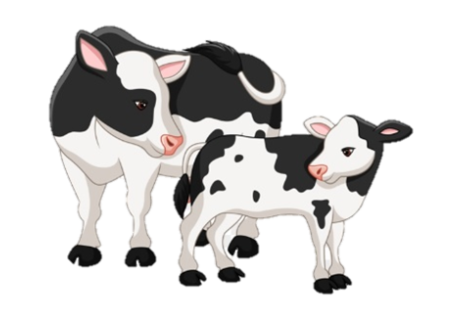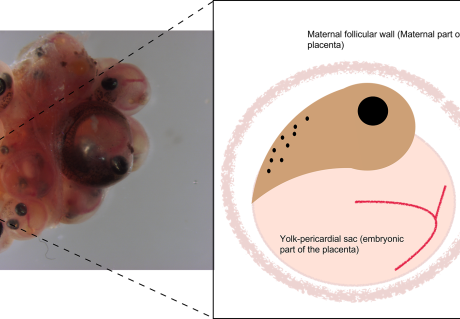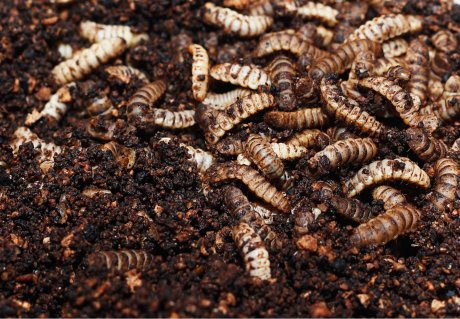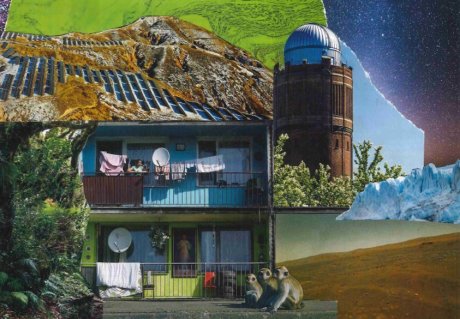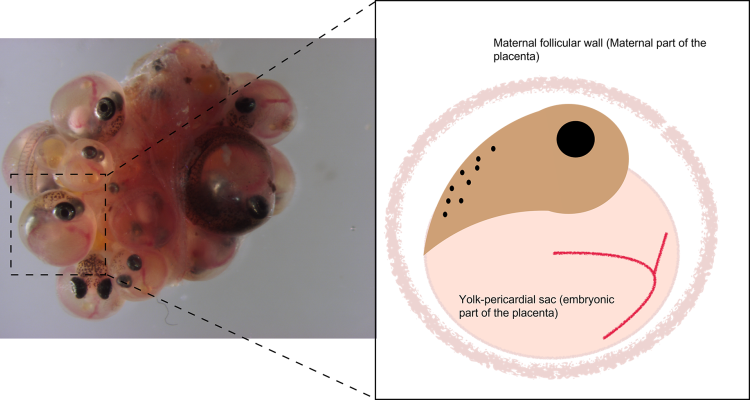
How does complex life evolve? The co-evolution of maternal immune tolerance and placentas in live-bearing fish
WIAS Magazine - Winter edition 2022
Research Overview
The diversity and complexity of living creatures is both marvelous and mysterious. How did organisms become what they are today? Studies on the evolution of complexity struggle to capture what has been lost with history, because information on evolutionary processes and ancestral and intermediate species is often lacking. Fortunately, now and then nature allows us to see a glimpse of the complex and wonderful history of life as we know it. In my PhD project I try to understand a bit of this ever-changing puzzle by investigating the co-evolution of the maternal immune system and the placenta in the colorful live-bearing fish family Poeciliidae (also known as the guppy family).
The placenta is a highly complex organ that regulates the physiological exchange between mother and fetus. Nutrients are transported from mother to fetus, and waste products from fetus to mother. At the same time, foreign paternal proteins (antigens) are present along this maternal-fetal interface. As a result, we would expect an immune response followed by rejection of the partly foreign fetus and placenta, but this does not occur during a healthy pregnancy. This reproductive enigma suggests that the female’s immune system must have co-evolved with the placenta to protect the developing fetus from an immunological war during pregnancy. However, it is currently unknown how or when this complex immune system developed during the evolution of placental viviparity.
The aim of my project is to elucidate the immunological changes that enabled the evolution of placental pregnancies. To this aim, we will use a unique animal model provided by nature, the live-bearing fish family Poeciliidae. In this family, placentas have evolved independently multiple times. Moreover, there is remarkable diversity in placental complexity among closely-related species, ranging from live-bearing species that lack placentas (i.e., lecithotrophic viviparity) to species with intermediate and highly evolved placentas (i.e., placentotrophic viviparity) (Figure 1). During this PhD journey, I plan to compare the morphology and permeability of the maternal-fetal interface, and the presence of immune cells in closely-related species with different degrees in placental complexity. We hypothesize that a higher degree of placentation is associated with more physiological interaction between mother and fetus during pregnancy (e.g., more nutrient transport from mother to fetus) and that therefore the maternal-fetal interface should be more permeable. Subsequently, we predict that a higher degree of permeability will correlate with a higher complexity of the local immune system.
Each of the steps in our quest of elucidating the mechanisms underlying placental immunology will hopefully be rewarded with a better understanding of the evolution of complex life and therewith contribute to our knowledge of the living world of which we are part of.
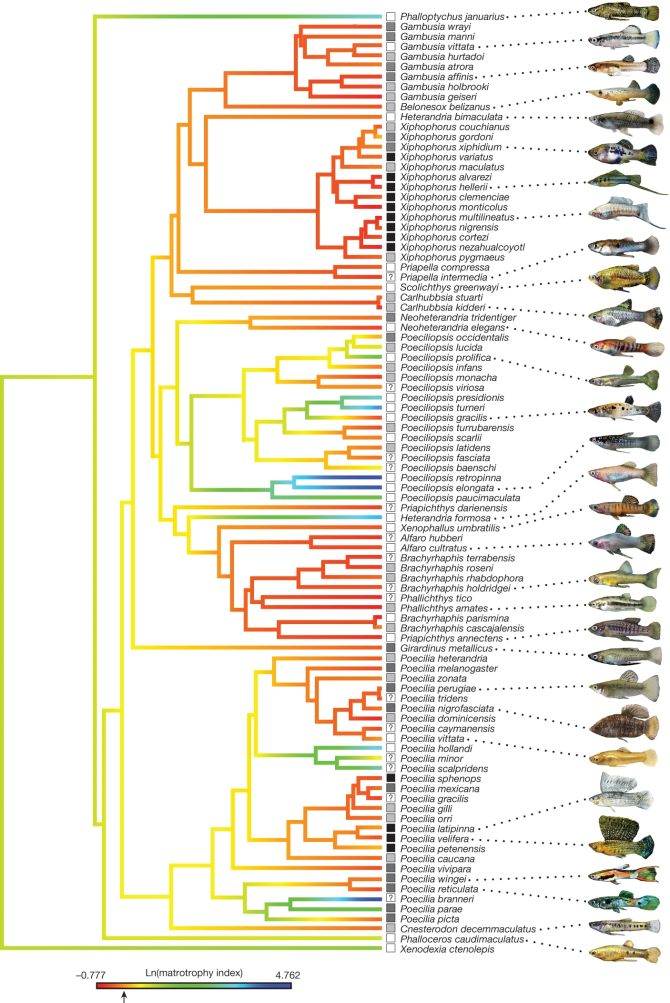
Figure 1: Phylogenetic tree of 94 species of the Poeciliidaefish family. "Branch colors depict a maximum likelihood reconstruction of maternal provisioning for log-transformed matrotrophy indices. The ancestral reconstruction was performed with phytools30 and a Brownian motion model of trait evolution. The arrow on the scale bar corresponds to a matrotrophy index value of 1.0, which indicates the division between lecithotrophic and placentotrophic species. In agreement with previous analyses, the ancestral reconstruction suggests a complex history for the evolution of placentotrophy. The current analysis suggests that the common ancestor of the family has a placenta and that there were multiple losses and gains of placentation within the family." (red: no placenta; green: poorly developed placenta; blue: well-developed placenta; Figure taken from Pollux et al., (2014)).
Reference
Pollux BJA, Meredith RW, Springer MS & Reznick DN (2014) The evolution of the placenta drives a shift in sexual selection in livebearing fish. Nature 513:233-236.

